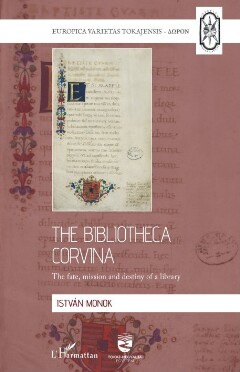Oldal 45 [45]
Csaba Csapodi does not mention Stephanus Byzantinus.'” Looking through
all the authors editions, no trace was found of any mention linking the manu¬
script to the Bibliotheca Corvina. The accompanying and explanatory texts of the
first two editions (Aldus Manutius, Philippo Giunta)'’’ are insufficiently short,
although Guilielmus Xylander (1532-1576) wrote a very rich introduction to his
edition'”® which has stood the test of time: the three prefaces of the best edition of
the 17th century contain a detailed textual history without mentioning the name
of Matthias or Buda. At the same time, it is impossible that Szamosközy would
have invented his name to make his list longer.
Rather than summarising the issue of the Bibliotheca Corvina and the prints,
I would like to reiterate the need for a new corvina bibliography. This could also
be a chronological collection of texts, from the 15th to 18th century, containing
all the documents relating to the history of the library and the fate of the indi¬
vidual codices. ‘The list of those texts preserved in the library of Matthias could
be expanded on which, if not an editio princeps, but a new textual evaluation was
done. The Latin grammar of Giovanni Battista Guarino Veronese (1374-1460)
is certainly among these, of which in the second half of the 15" century many
manuscript copies and three incunabula were known.’” Later many early modern
editions were published, the first in the Schürer printing house in Strassbourg.?°°
‘The publishers changed the text according to its intended use (as a coursebook or
an enduring humanist text), partially the text itself, partially the Latin language
examples. The copy from the Bibliotheca Corvina, now preserved in the library of
the University of Jena,” was published as a text (not to add to the language books
in use) by Burkhard Gotthelf Struve (Struvius, 1671-1738) in 1704.7” In this case,
the corvina as a variant of the text became so interesting that it was publsihed
in full. Struve, who, prior to the publication of the text, wrote a book about the
greatest figures in the history of teaching Latin eloquence in the 16th and 17th
century," says the following about the Jena Codex:
19
HOFFMANN, S. F. W., 1961, 441-443.
17 STEPHANUS Byzantınus-Manurius 1502; STEPHANUS Byzantınus-Manurius 1521.
18 STEPHANUS BYZANTINUS-XYLANDER 1568.
19 Csaropı 1973, 238 (Nr. 312.) says the Buda copy is decorated. The codex was first described in
Hungarian literature by Csontosi 1881. It was not included in the Buda Workshop Exhibition (Zsu¬
pän-Földesi, ed., Budai mühely, 2018). Csontosi’s statement on the binding is presented and refuted
by Mik6 2020, 66-67. The incunabula editions of the text: Ferrara, Andreas Belfortis, Gallus, circa
1475 (ISTC ig00528000), Ferrare, Andreas Belfortis, Gallus, circa 1478 (ISTC ig00529000), Hei¬
delberg, Heinrich Knoblochtzer, 18 Dec. 1489 (ISTC ig00530000). The critical editions of Guarino’s
text, KALLENDORF 2002, 260-309., and VapAsz 2007 do not state that the corvina served as the basis
for the incunabulum edition.
200 GUARINUS-BEATUS RHENANUDS 1514.
201 JENA, Universitätsbibliothek, Bos. 8° 1.
202 GuarINus-Struvius 1704. It is interesting that Csonros1 1881, who listed the prints that mention
the manuscript as a corvina and knew that Struvius had published Guarino, does not mention the
publication itself. It is indeed a rare print, perhaps that is why he did not handle it, but mentions the fact
of its publication on the basis of later literature. VapAsz 2007, 12. quotes the edition itself as existing.
An important Hungarian reference in this is on page 8, he praises the work of Albert Szencı Mor¬
NAR for his achievement in the volume Syllecta scholastica. (Heidelberg-Frankfurt am Main, Clemens
a
00
a
203
43

